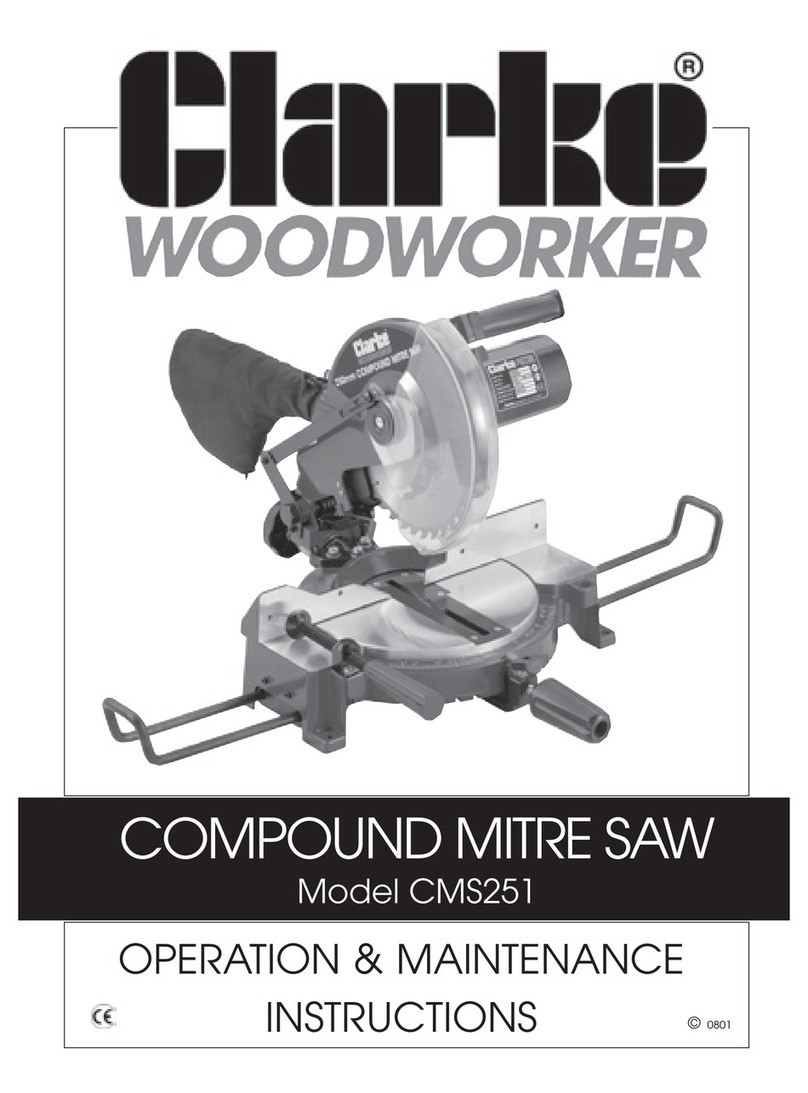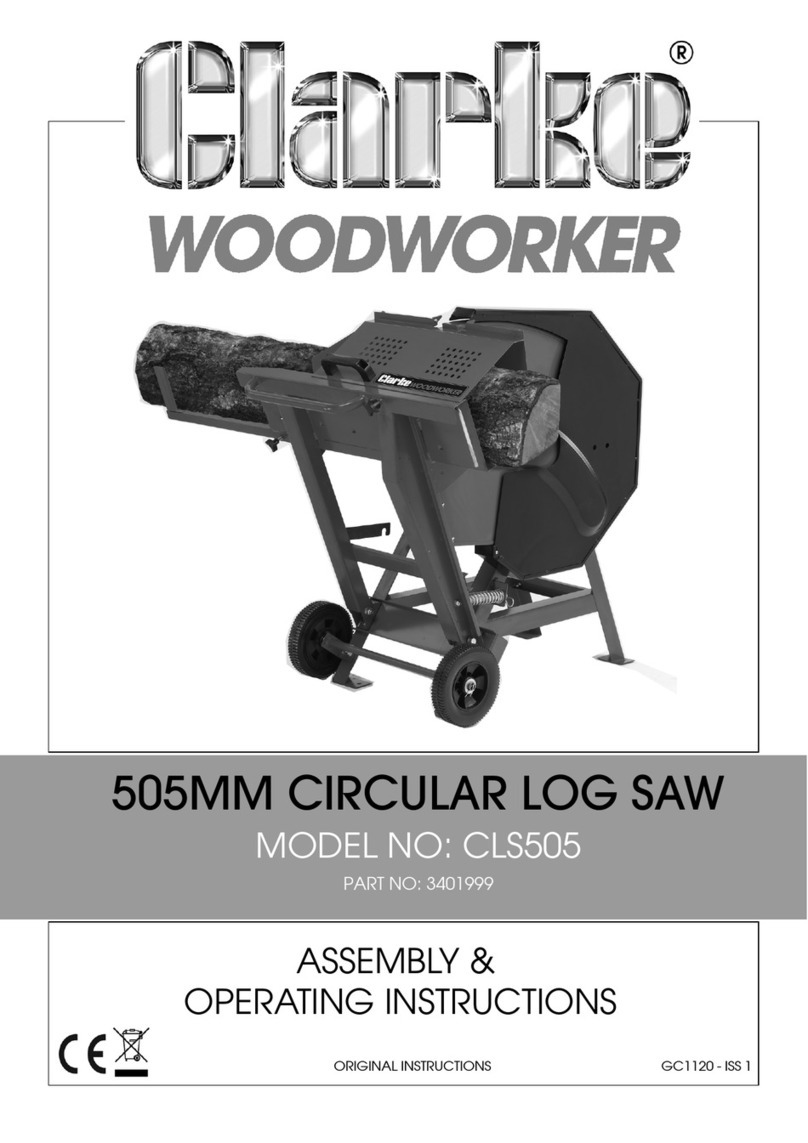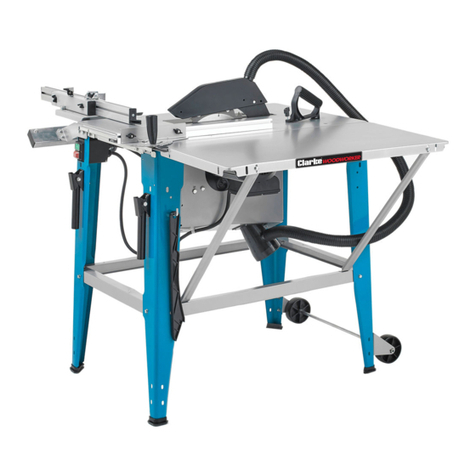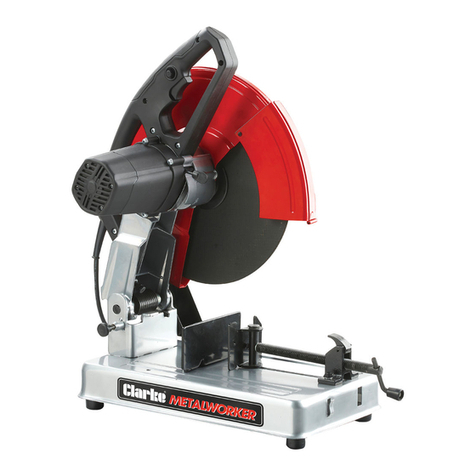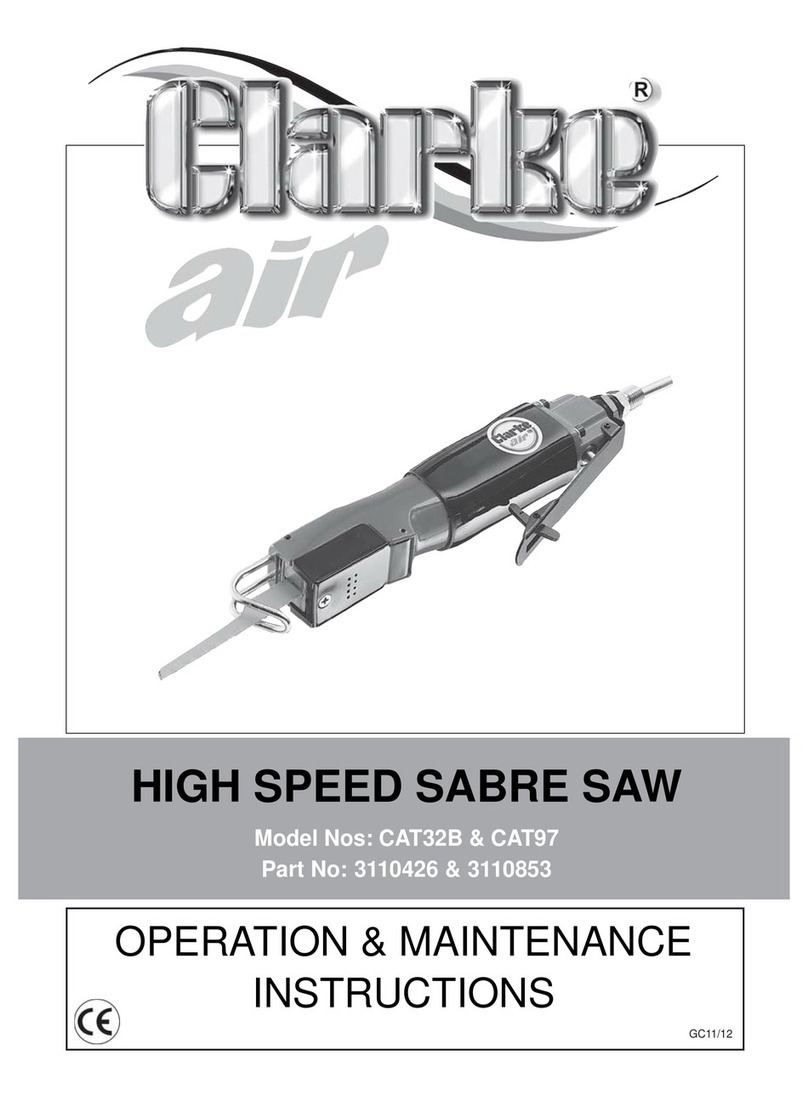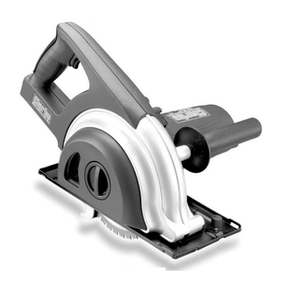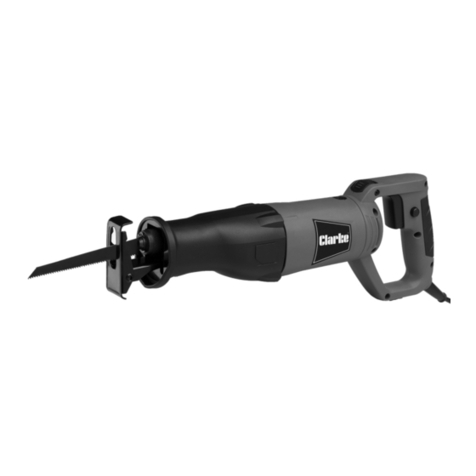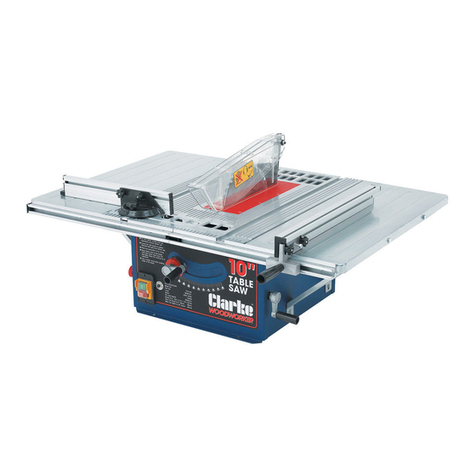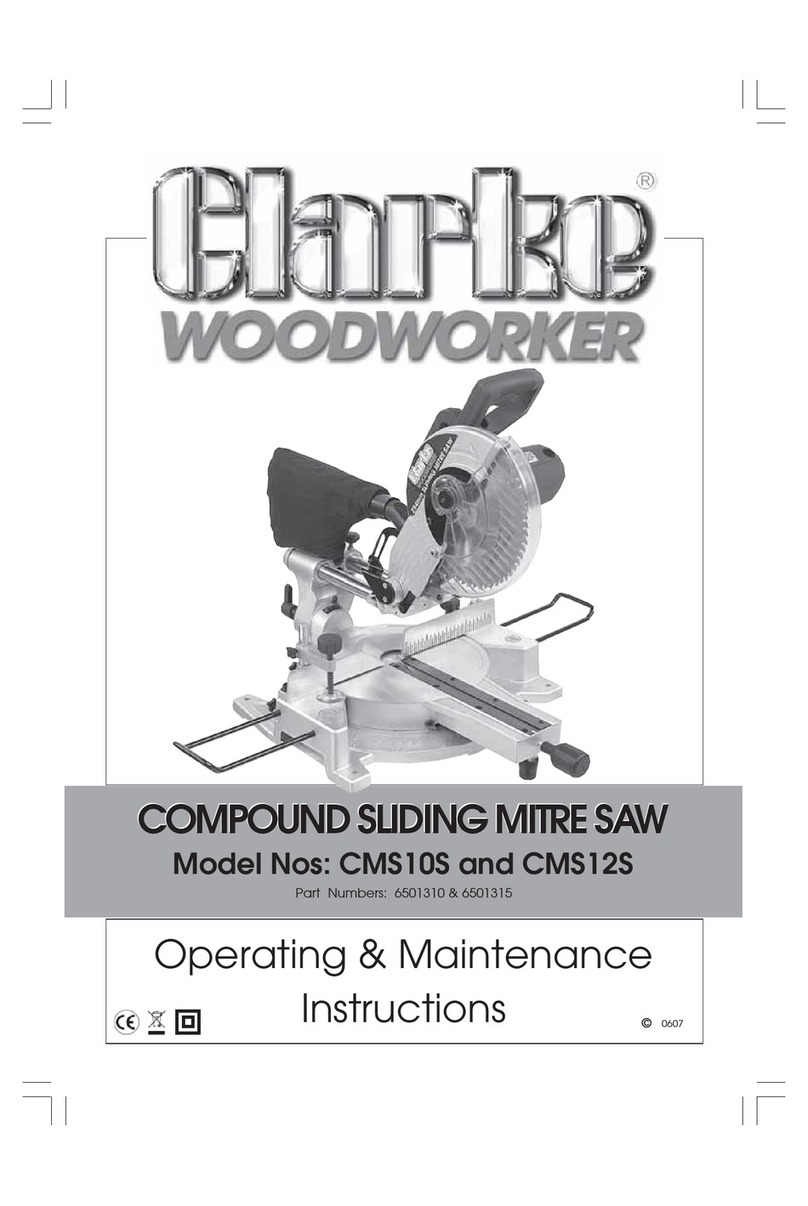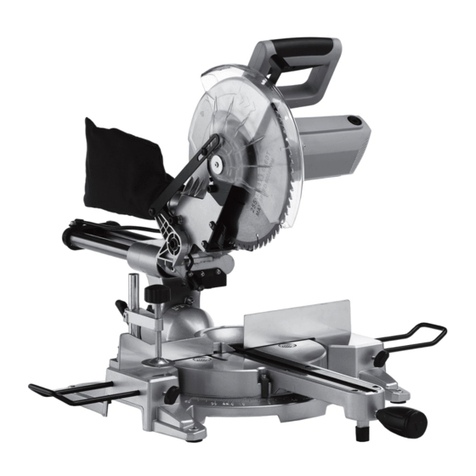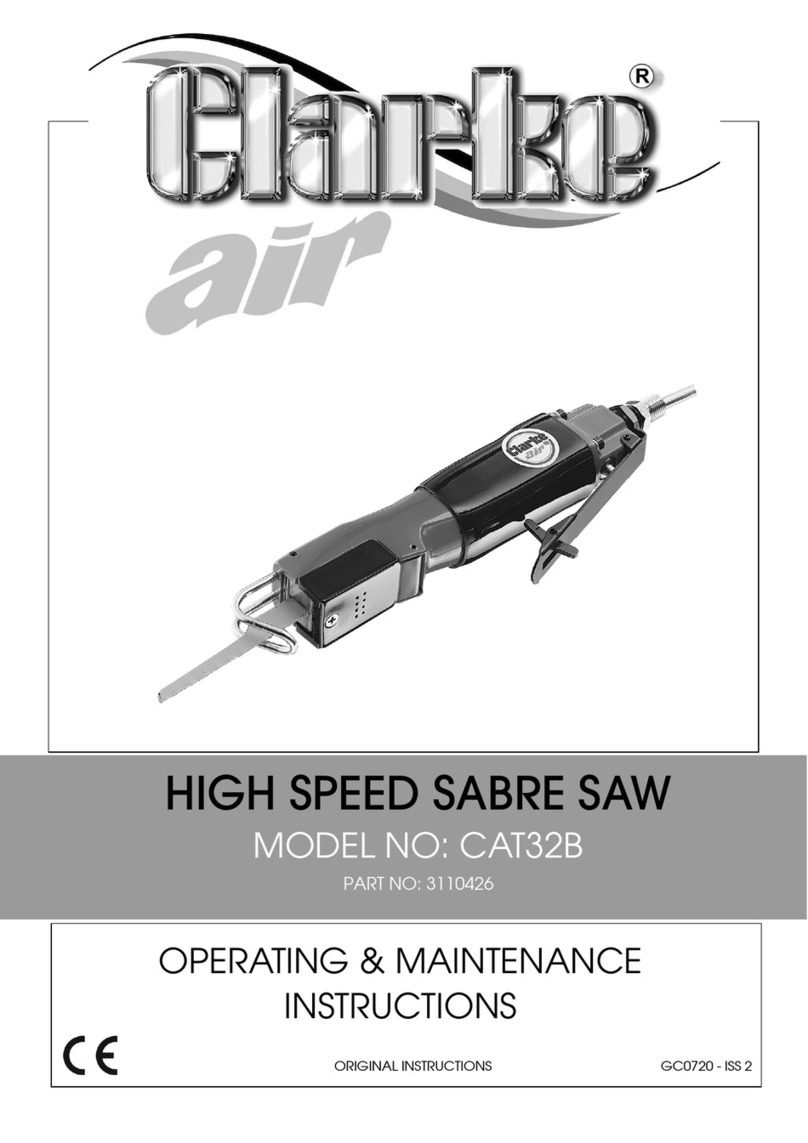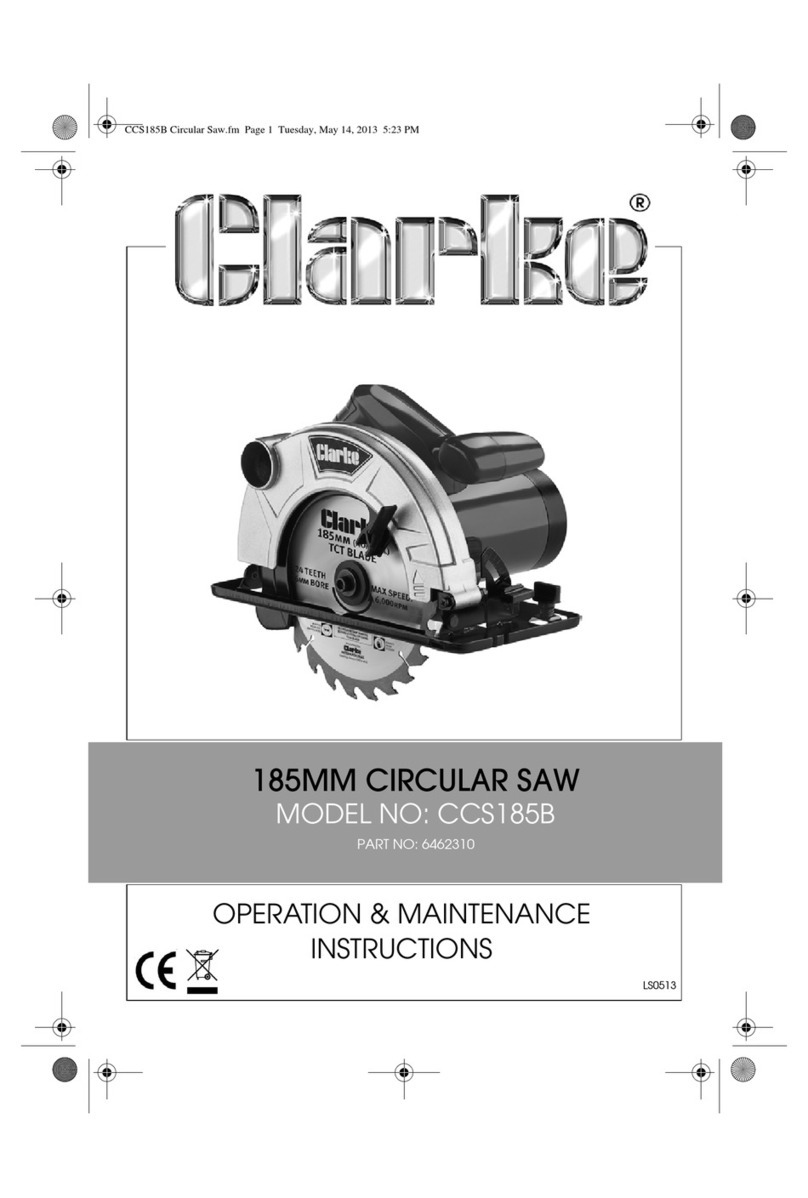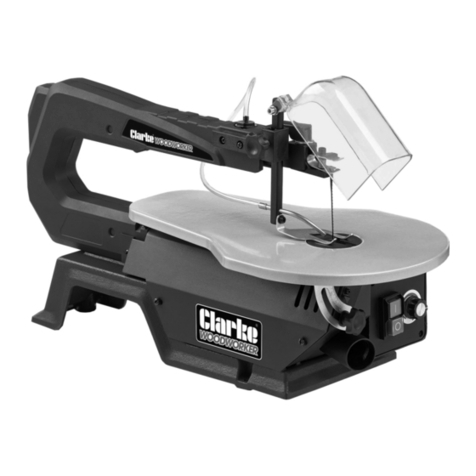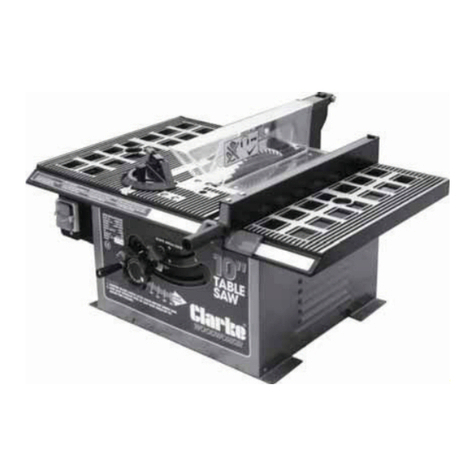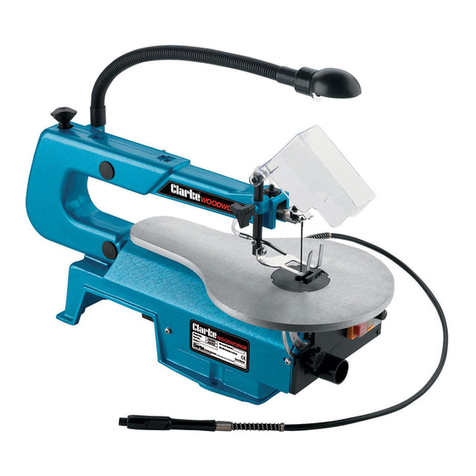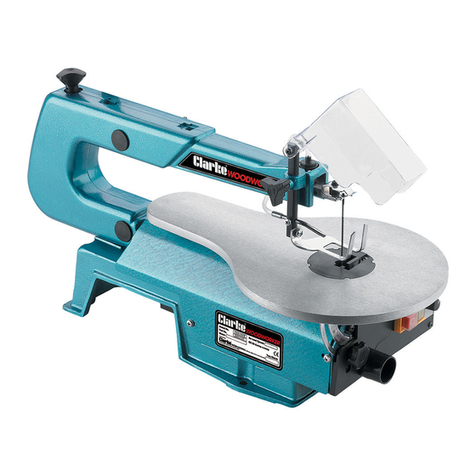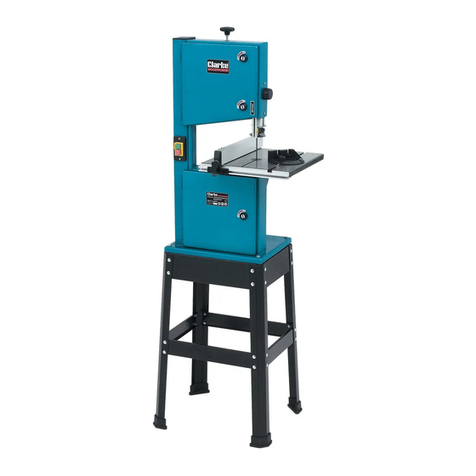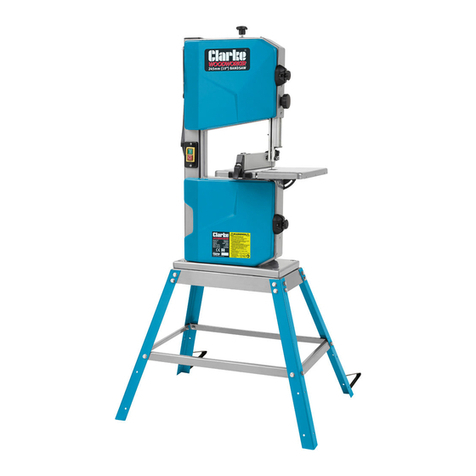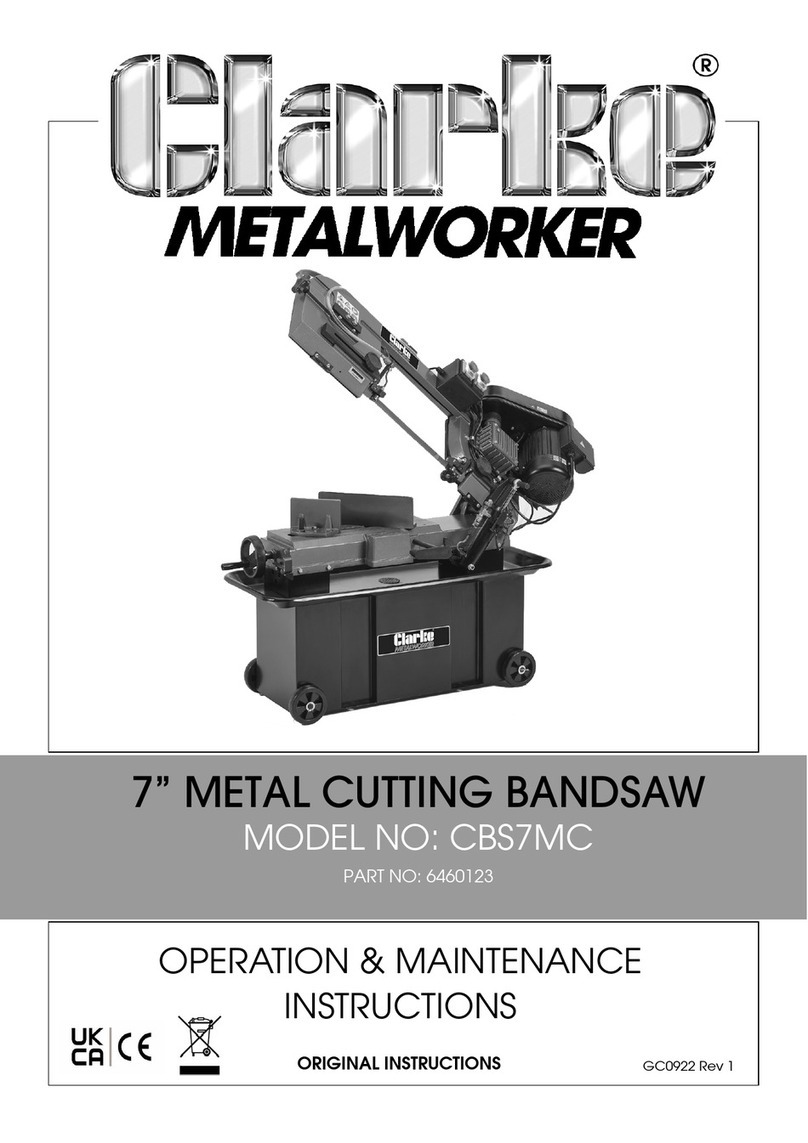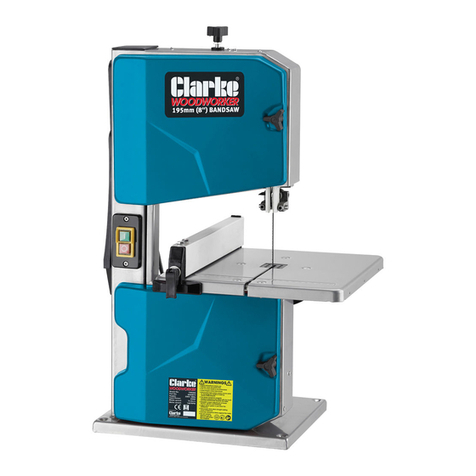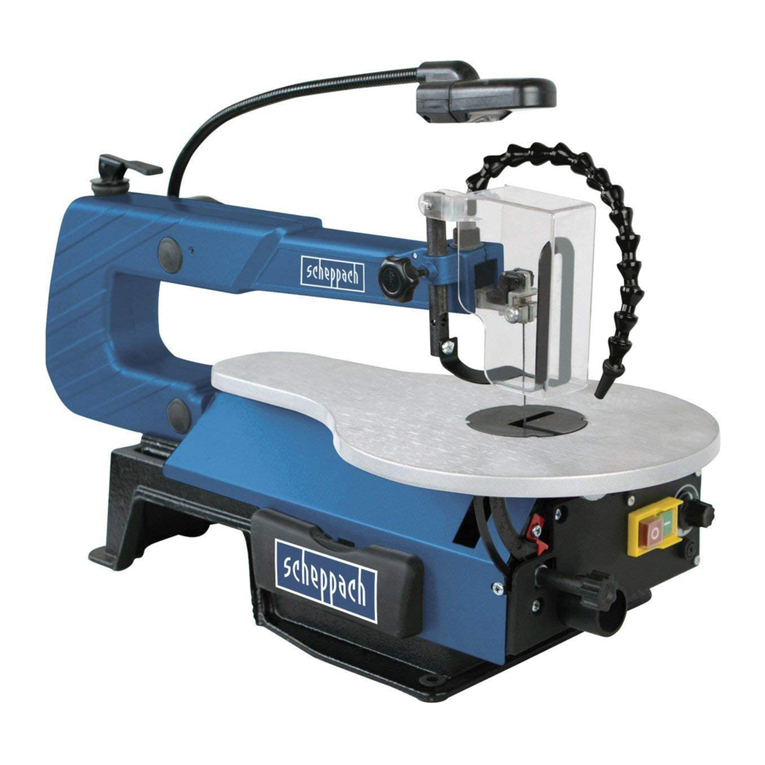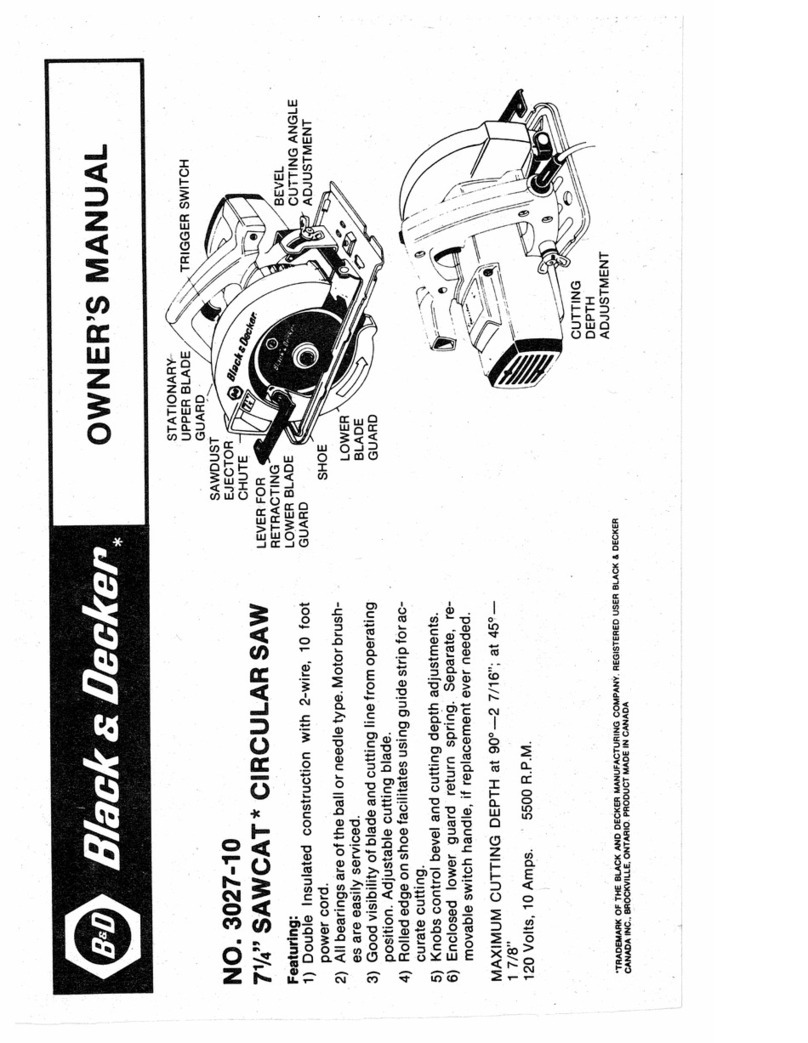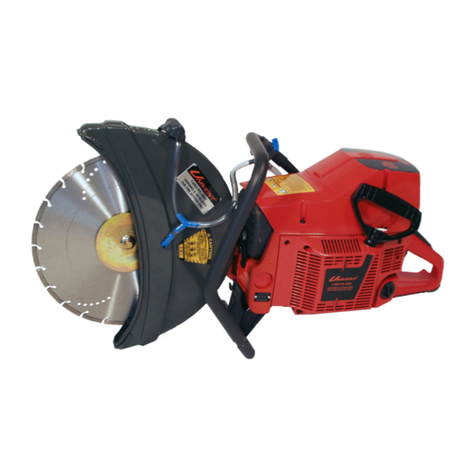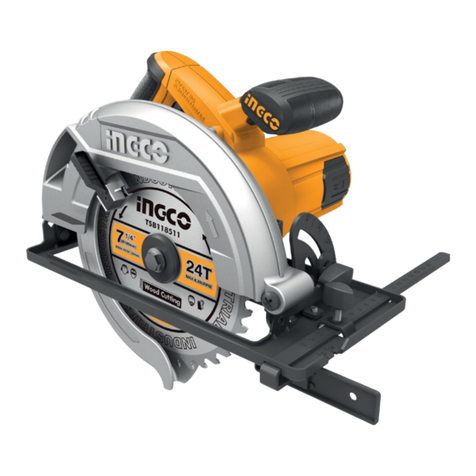5
Parts & Service: 020 8988 7400 / E-mail: Parts@clarkeinternational.com or Service@clarkeinternational.com
2. Do not use the power tool if the switch does not turn it on and off. Any
power tool that cannot be controlled with the switch is dangerous and
must be repaired.
3. Disconnect the power tool from the power supply before making any
adjustments, changing accessories, or storing the tool. These measures will
reduce the risk of the power tool starting accidently.
4. Store power tools out of the reach of children and do not allow persons
unfamiliar with these instructions to operate the power tool. Power tools are
potentially dangerous in the hands of untrained users.
5. Maintain power tools in top condition. Keep tools/ machines clean for the
best and safest performance. Check for misalignment or binding of
moving parts, broken parts, or any condition that may affect the power
tool’s operation. If damaged, have the power tool repaired before use.
Many accidents are caused by poorly maintained power tools.
6. Use recommended accessories. The use of improper accessories could be
hazardous.
7. Machine cleanliness. Do not allow the ventilation slots in the machine to
become blocked with dust.
8. Check the power tool for damage before using the machine. Any
damaged part should be inspected to ensure that it will operate properly
and perform its intended function. Check for alignment of moving parts,
breakage of parts, mountings, and any other condition that may affect the
machine’s operation. Any damage should be properly repaired or the part
replaced. If in doubt, DO NOT use the machine. Consult your local dealer.
SERVICING
1. When necessary, have your power tools serviced or repaired by a qualified
person using identical replacement parts. This will ensure that the safety of
the power tool is maintained.
ADDITIONAL PRECAUTIONS FOR BANDSAWS
1. Always check safety guards are closed and secure before switching the
machine on.
2. Always use a push stick and fence with small workpieces wherever
practical.
3. Always use the appropriate saw blade for the material being cut.
4. Always wear gloves for handling the saw band and rough material.
5. Never use the machine if the electric cable or plug is in poor condition.
6. Never attempt any maintenance or adjustments of the band when it is in
motion.
